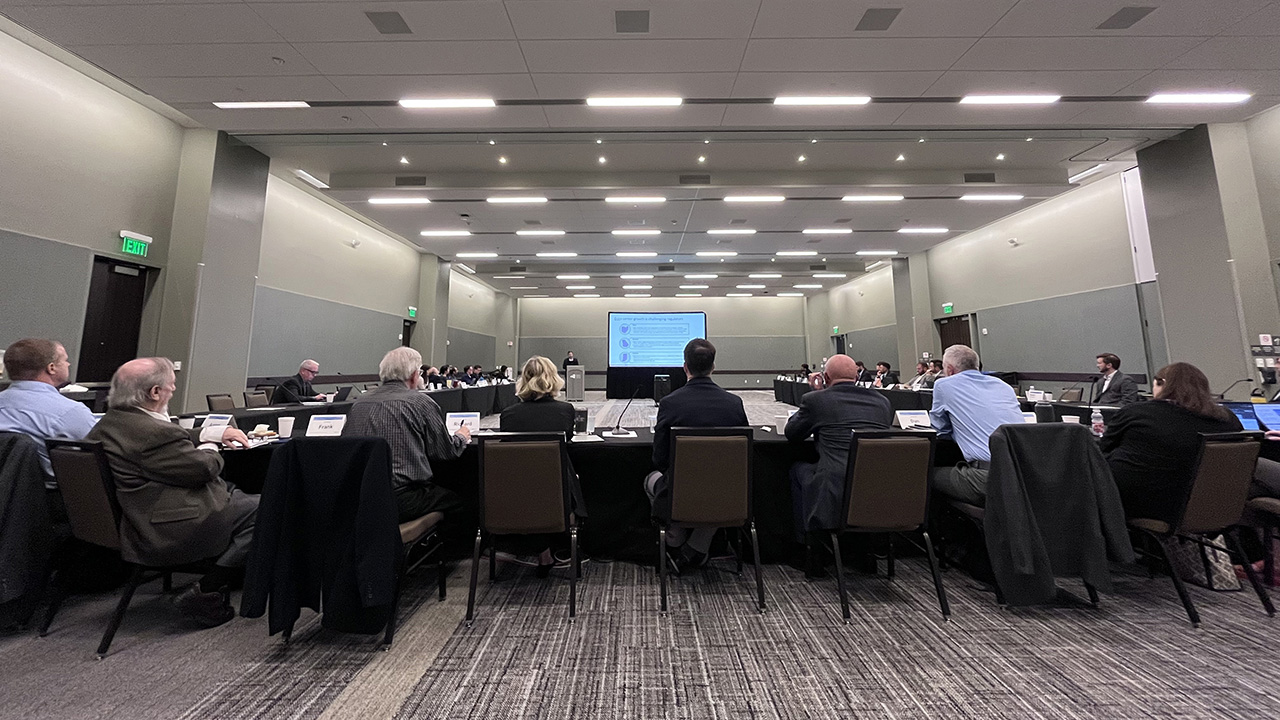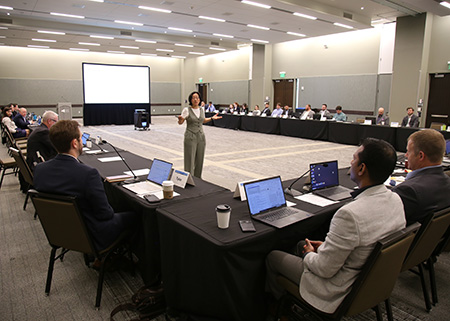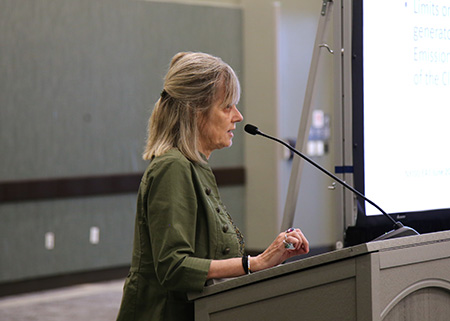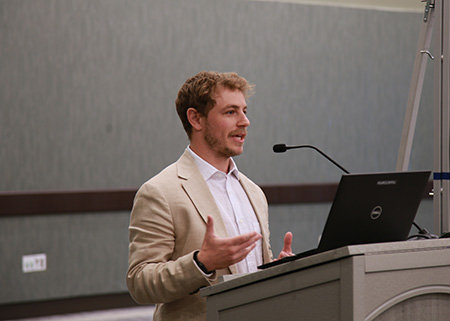Environmental Advisory Council Explores Shifting Federal Policy, Shrinking Margins, Large Load Flexibility & Battery Storage

The NYISO Environmental Advisory Council held its spring meeting in June to examine challenges and opportunities with the transition of the electric system to more renewable generation as demand for energy increases.
The council — comprised of experts in areas of environmental policy, environmental justice, engineering, and technology — heard from NYISO executives and industry leaders on some near- and long-term uncertainties facing the electric grid.
“It’s crucial to have a wide range of feedback and advice,” NYISO President & CEO Rich Dewey said. “This particular session, which we hold twice a year, facilitates discussions along environmental lines, filling in some of the gaps that we have in our regular stakeholder sessions. It really completes and complements a lot of our strategic planning.”
The EAC was formed in 2005 to provide the NYISO with information, analysis, and perspectives on the dynamics between evolving state and federal environmental policies and the NYISO’s mission of maintaining reliability of the high voltage electric system and administering competitive wholesale electricity markets.
Yachi Lin, NYISO Director of System Planning, opened with an overview of Power Trends 2025, the NYISO’s annual publication highlighting data and trends impacting the evolving electric grid.

Lin highlighted how reliability margins have declined in New York in the past decade. Generator retirements outpacing the entry of new resources, the push for electrification, a growing number of large loads seeking to connect to the grid, and challenging winter conditions are testing grid operations and planning.
The grid will become a winter-peaking system by the 2040s, resulting in constraints on the availability of natural gas during the coldest months.
Lin highlighted more than 6,000 megawatts (MW) of large loads currently in the NYISO interconnection queue, largely data centers, manufacturing plants and cryptocurrency miners seeking connection to New York’s electric grid. Of that figure, approximately 2,500 MW of new large loads are forecasted to emerge in the next few years, the largest of them Micron data center in Central New York, which is projected to consume more than 1,056 MW. Assessing the certainty, timing, and impact of these new large loads is a growing challenge for the NYISO in the face of declining reliability margins that Lin noted.
Power Trends 2025 proposes repowering aging plants as a way to lower emissions, meet rising consumer demand, and provide reliability benefits that are needed to integrate additional clean energy resources.
EAC member Karen Palmer, a Senior Fellow at Resources for the Future (RFF), then addressed the potential impact of recent federal actions, including the Environmental Protection Agency’s proposed repeal of Greenhouse Gas Emissions guidelines and One Big Beautiful Bill, which rolls back tax credits for certain clean energy resources.

Government expenditures in the climate and renewable space are expected to decrease significantly, by an estimated $190-270 billion, Palmer said.
“Because this is happening in the context of reconciliation, that does limit the outpouring of federal dollars,” Palmer said. “People are still hopeful that some of these tax credits will be extended a little further, to have less of a hit, particularly on renewables.”
By 2030, RFF expects to see electricity rate increases of 6-8% due to the elimination of tax credits, with consumers bearing most of the costs, especially in the Midwest and plains states. RFF also anticipates an overall decrease in future wind and solar capacity, along with increasing CO2 emissions across the power sector.
Tyler H. Norris, James B. Duke Fellow & Ph.D. Student, Nicholas School of the Environment, Duke University, presented his research on large load flexibility, which seeks to characterize how energy-intensive data centers, factories and crypto mining facilities operate in real-world conditions.

While there is a perception that data centers are running at their peak capacity 24/7, the reality is that data center servers are not running anywhere near their utilization rate and data centers tend to oversize their capacity request to maximize their options, Norris said.
Norris contends that there is little understanding of the variance of a facility’s non-IT load. Therefore, data center load is likely not as high as the perceptions would indicate, but there is a lot of uncertainty surrounding it. “The data is obviously very limited, so it’s hard for people who think about power system planning to understand when you hear that we are expecting 1 gigawatt data center,” Norris said. “What does that mean when it comes to its actual peak expected to draw and its annual megawatt hour (MWh) consumption?”
He noted that in 90% of hours, 30% of the power system remains unused. While there is adequate energy available, there is limited capacity, making data center energy use at times of peak demand especially challenging. Norris contends that this highlights the importance of understanding what types of flexibility are available to data centers and other large loads, which include on-site power and storage, temporal flexibility (shifting operations to off-peak times), spatial flexibility (shifting load geographically to other servers), and options for reduced operations.
Norris noted that different types of data centers will have different degrees of flexibility; the less flexible a load is, the more burden it is during times of peak demand. For example, an AI data center performing consumer inference -- like chatbots and search AI -- will have low flexibility, while an AI data center performing foundation model training should have a high degree of flexibility.

Phil Denara and Kris Fitzpatrick, of Key Capture Energy (KCE), which has energy storage sites in New York and Texas, offered an overview on conditions for battery storage investment in New York.
KCE storage sites in New York provide a range of services, from frequency regulation – which helps balance peak demand, avoiding costly buildout of new transmission infrastructure – to full-service capacity, energy and ancillary services.
While storage can enable reductions in greenhouse gas emissions, it is not technically a renewable or “clean” generator, as it relies on a generation source to charge the battery.

New York has policy signals that support the development of storage, including the Public Service Commission’s 2018 Storage Roadmap that has a target of 6 gigawatts (GW) by 2030 and NYSERDA’s program which provides financial support.
NYSERDA offers an Indexed Storage Credit (ISC) mechanism to incentivize 3 GW of new capacity by providing a 15-year revenue hedge to participating projects, affording revenue certainty.
KCE emphasized the importance of accurate capacity accreditation pricing mechanisms to help NYSERDA enter cost-effective contracts and to improve siting of storage systems where they are needed.
